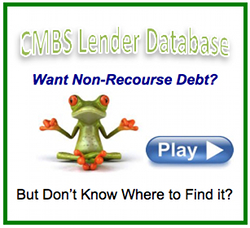Six Things Not to do When Selling!
Warning: Use of undefined constant user_level - assumed 'user_level' (this will throw an Error in a future version of PHP) in /home/zzgspc5zic0z/domains/findthecapital.com/html/wp-content/plugins/ultimate-google-analytics/ultimate_ga.php on line 524
Article by, Brent Virkus – Senior Managing Director of Find the Capital
 You’re at an industry event mulling over which cheese will go best with which crackers at the buffet. The person next to you introduces himself. You introduce yourself. Then he says:
You’re at an industry event mulling over which cheese will go best with which crackers at the buffet. The person next to you introduces himself. You introduce yourself. Then he says:
“So tell me, what do you do?”
The challenge is to communicate the key elements of your value. When we work with our clients to teach them how to sell, we tend to focus on helping them learn the right things to do.
However, even those on the right track can get derailed by common mistakes. It’s often just as helpful to know what not to do as it is to know what to do.
Here, then, are the most common mistakes we see people making when trying to answer the question, “What do you do?” and ideas for how to avoid them.
Mistake #1: Talking, but not saying anything
“Our solutions help Fortune 500 and mid-size companies succeed. Our unique blend of people, process, and technology allows us to build and deliver value over-and-above our competitors. One unique thing about us is…”
Even if it’s well-practiced and smoothly delivered, a cliché that doesn’t communicate anything is still a cliché that doesn’t communicate anything. Make sure you avoid sounding like a buzzword bingo robot and focus on adding value to the conversation.
Building rapport is a major component of a successful sales conversation. Starting off with a cliché, however, won’t help build rapport – it’s more off-putting than endearing.
Mistake #2: Going on too long at first
“I read my first book on tax shelters in junior high school and was hooked. Immediately, I got a job at a tax accounting firm and started doing research in international tax. After junior high, I got another job at an accounting firm and got my first introduction to nonprofit auditing. Let me tell you about some of the projects I worked on in high school and their results…”
In any sales process you have to do three things if you want to communicate your full value: resonate, differentiate, and substantiate. Indeed, you have to resonate on two levels, differentiate on two levels, and substantiate on four.
If you’ve done your homework, you know key points you can communicate in each category. But, too often, folks go too deeply too quickly and ramble on for too long. You can’t get it all in at once. (Well, you can, it’s just not helpful, so don’t try it.)
Mistake #3: Clever…silly
“We’re the smiley-faced accounting firm.”
“We’re the leading-with-integrity technology company.”
“We put the hospitality in hospital.”
Silly preambles don’t typically add much, but they can take away. Some people open with their best Don Draper tag line. People that start off too clever often come across as not serious enough. Instead, start with basics: who you are, what you do, and who you do it for. Then continue the conversation from there.
Mistake #4: Too detailed
“We are a law firm and we focus on admiralty law, alternative dispute resolution, antitrust, bankruptcy, appellate litigation, complex litigation, debt financing, environmental law, foreign corrupt practices, government relations, ice cream patent and trademark, koala bear adoption, llama surrogate pregnancy litigation…”
The larger the company, the more complex and varied the offerings tend to be. Make sure you can chunk and label the categories in which you provide solutions so you don’t have to name each and every thing you do.
If you’re a diversified financial services firm with over 2,000 different offerings, you can still categorize them in some simple way. For example, “We focus on consumer banking and investments, insurance, and commercial banking, and we have a wide range of products and services we can apply as solutions depending on what’s right for each customer.”
You should know the relevant detail so you can talk about it if that’s where the conversation goes, but hit the big list early on and the other person will zone out.
Mistake #5: It’s complicated
“Well, um, you see, in capital intense businesses there’s sometimes a situation where the capitalization structure needs to be reengineered because… well, there’s really a lot to it. Okay, from a big picture perspective we tend to focus on smokestack businesses but only where their capital structure…”
If your business is technical in nature, unless you’re at a technical conference talking with other techies, don’t go all 1.21 jigawatts on them. There’s a straightforward, easy-to-understand way to describe yourself and your value. You can say you use technically sophisticated processes, but focus your messages on practical, easy-to-understand applications.
For example, 3M is one of the most technologically sophisticated companies in the world. When they describe themselves on their website, however, here’s what they say: “Over the years, our innovations have improved daily life for hundreds of millions of people all over the world. We have made driving at night easier, made buildings safer, and made consumer electronics lighter, less energy-intensive and less harmful to the environment. We even helped put a man on the moon.”
Make sure you know yours and you’ll have a nice sentence or two that you can use to help move a conversation forward.
Mistake #6: Not customizing for the audience
Most people answer “What do you do?” with a short, pat answer and stop there. If you’re speaking to someone who may be a good connection for you, you want to give them a sense of what you really do. As noted earlier, you want to:
- Resonate, so they will find you and what you do intriguing;
- Differentiate, so they will see how you stand out from others; and
- Substantiate what you say, so they will believe it.
You can’t do all of this with a simple answer, and the mix of messages that will work for one person won’t work for another. You have to find things out about them so you can customize your response for each person.
Think of all the ways you could resonate, differentiate, and substantiate. There are probably a lot of ways. Instead of answering the question with a standard answer, answer it in a conversation.
When someone asks what you do, describe a bit about you and your company – typically, at first, who you are, what you do, and who you do it for, briefly – and then ask the same question of the other person. After they answer, ask them a question such as, “That’s interesting. What are the kinds of things you’re working on now in the XYZ area?” Or you can ask, “How did you get started?” Or, “How has the business changed in recent years?”
Pick a question you think will lead down a road that might be of mutual interest to you both. When they answer, they’ll typically go on for a bit and that helps the conversation in two ways:
- Gives you license to share more detail about you and your company. If they just went on for five minutes, you can, too. And they’ll often ask the same question back at you, making the conversation that much more natural.
- Gives you insight into how to customize what you say so it will be particularly interesting to them (you resonate), show them how you stand out (you differentiate), and give them the sense you are credible (you substantiate).
The next time you meet someone new, make it a conversation. Do so and you’ll find not only that it’s easier to describe what you do, but you’ll be much more effective when you do it.
 “How Did we Grow Our LinkedIn Presence to one of the…
“How Did we Grow Our LinkedIn Presence to one of the…
TOP 1% MOST VIEWED PROFILES on LinkedIn?”
Watch this FREE Video Presentation on how we used LinkedIn Build Several Multi-Million Dollar Companies….







